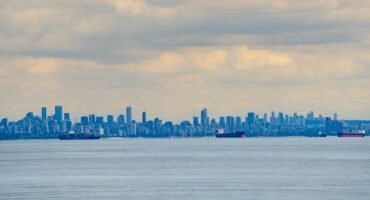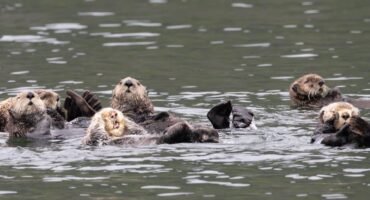
The Rockhoppers and Albatross at West Point Island
The Unexpected Beauty of the Falklands
When I mentioned our expedition was heading to the Falklands, most people gave me a puzzled look. Like many, my only association with the Falkland Islands was their role in the 1982 war—until we visited last year. The islands are bursting with diverse bird life, from penguins to albatross, making it a truly special spot for wildlife enthusiasts. While our fellow passengers were disappointed about missing Stanley, we were excited to explore the more remote parts of the archipelago, which is made up of over 200 islands.
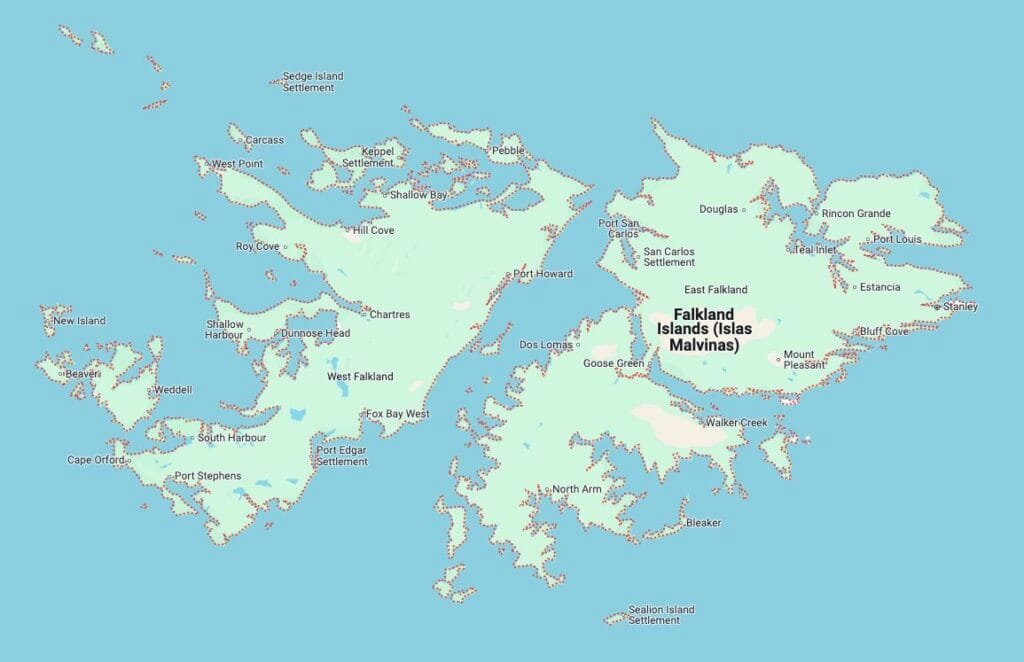
After a long and wet zodiac ride, we landed at the settlement. The caretaker offered to drive passengers to the other side of the island, but we chose the 2km trek to “Devil’s Nose”. It started with a steep hill but then levelled out on a well-worn path. As we approached the far side of the island, we descended into tussock grass, but it mercifully free of seals at this elevation.
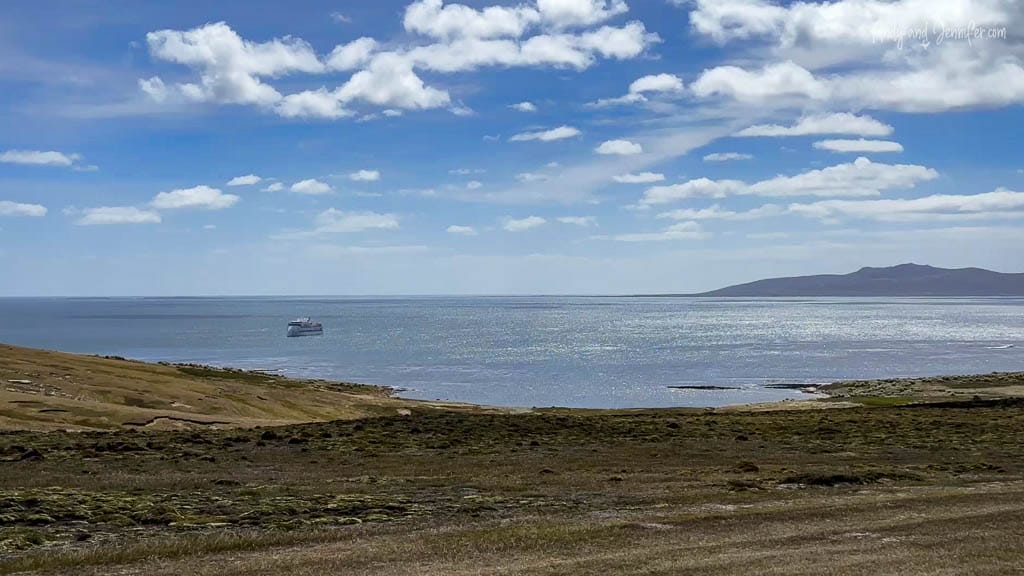
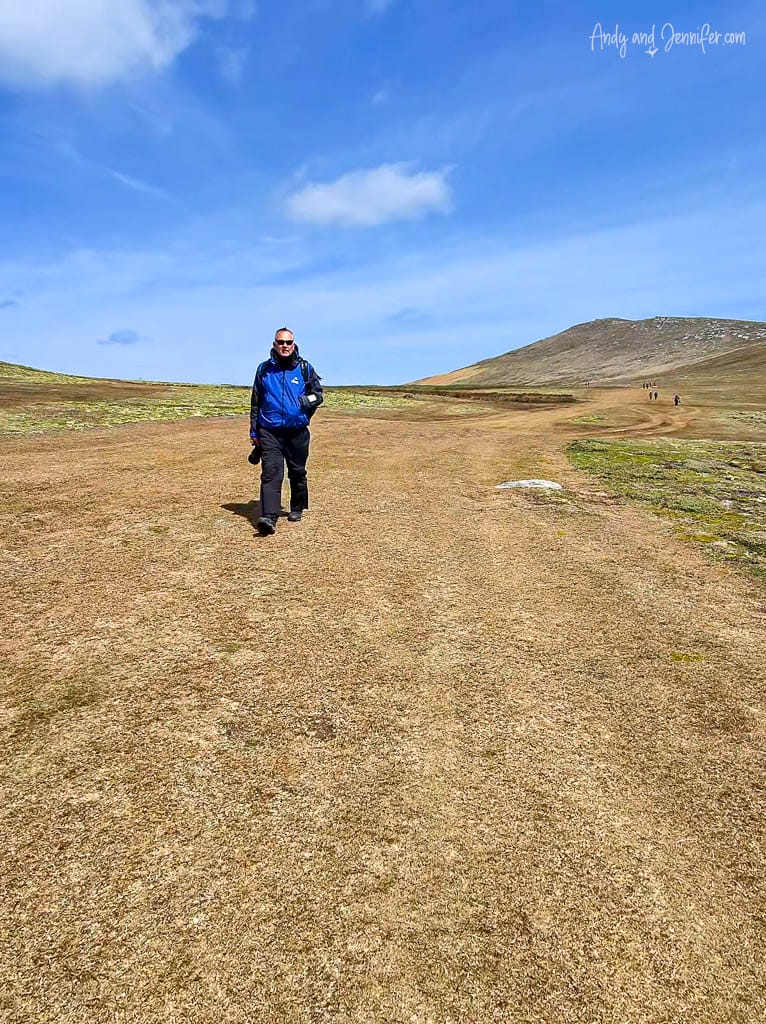

Our destination was a colony of black-browed albatross and rockhopper penguins, perched on cliffs overlooking the sea.
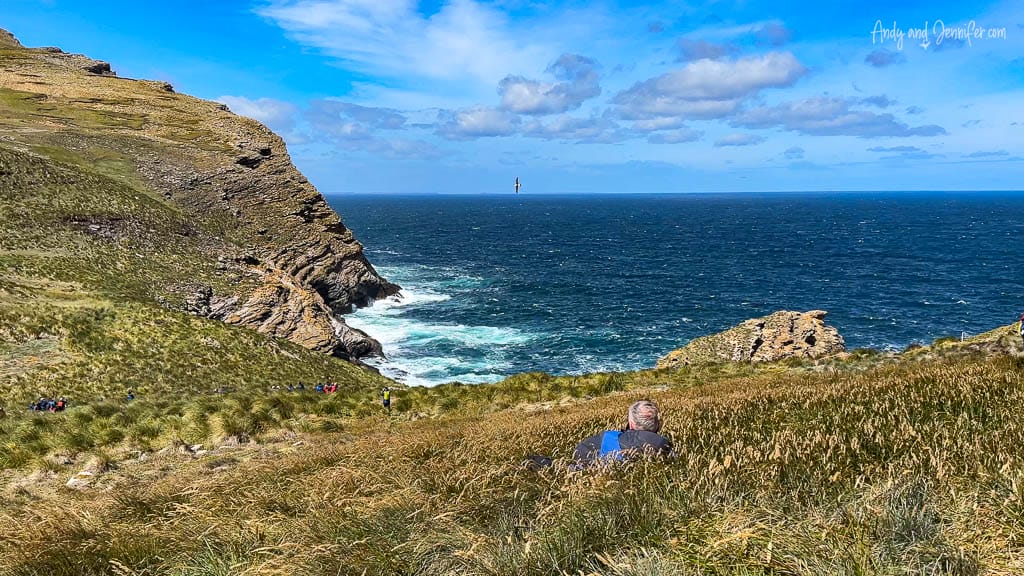
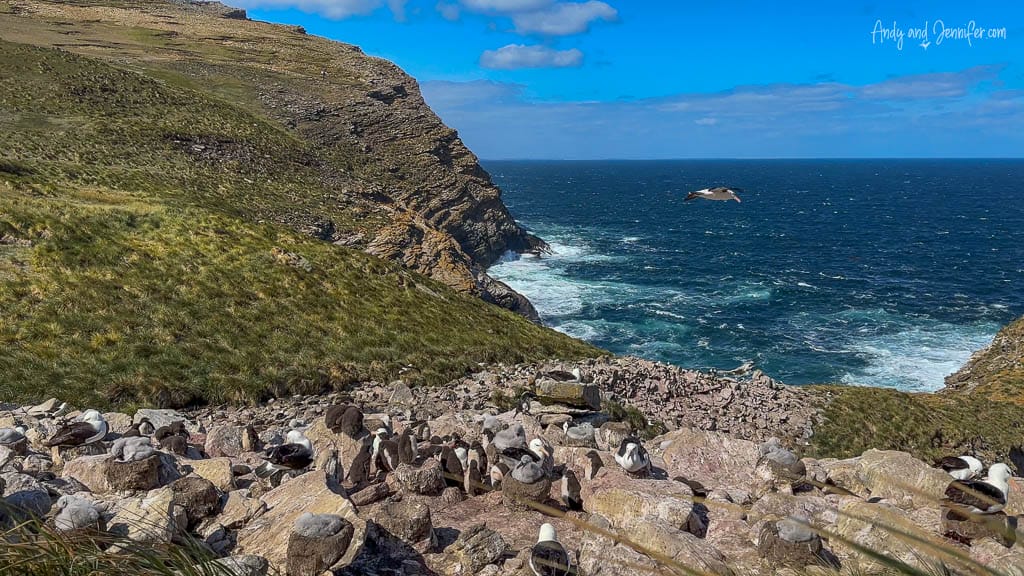
In a word, it was perfect—perfect weather, perfect wildlife.
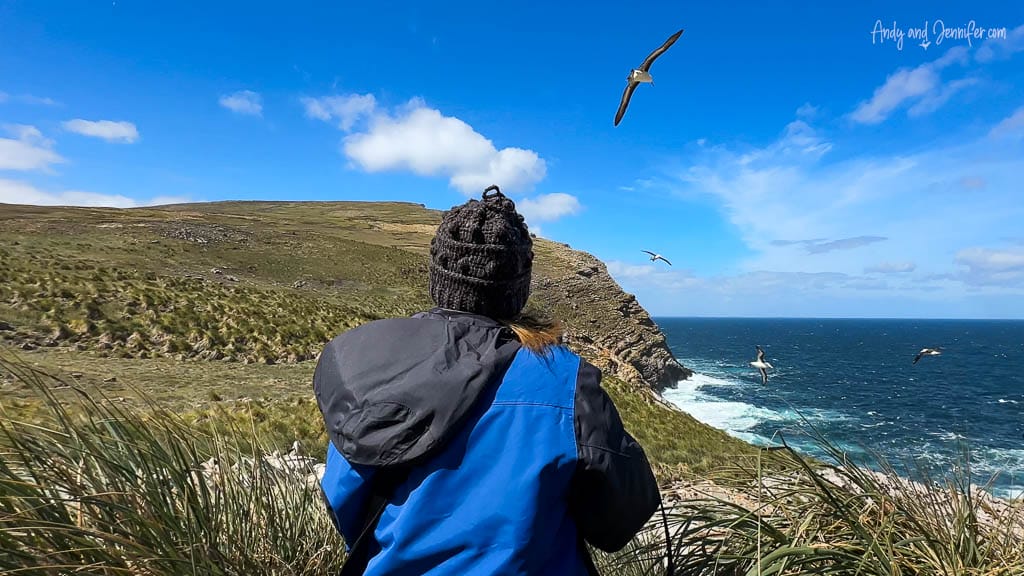
I could have spent the entire day watching the albatross glide effortlessly on the wind, tend to their chicks, preen, and engage in courtship rituals.
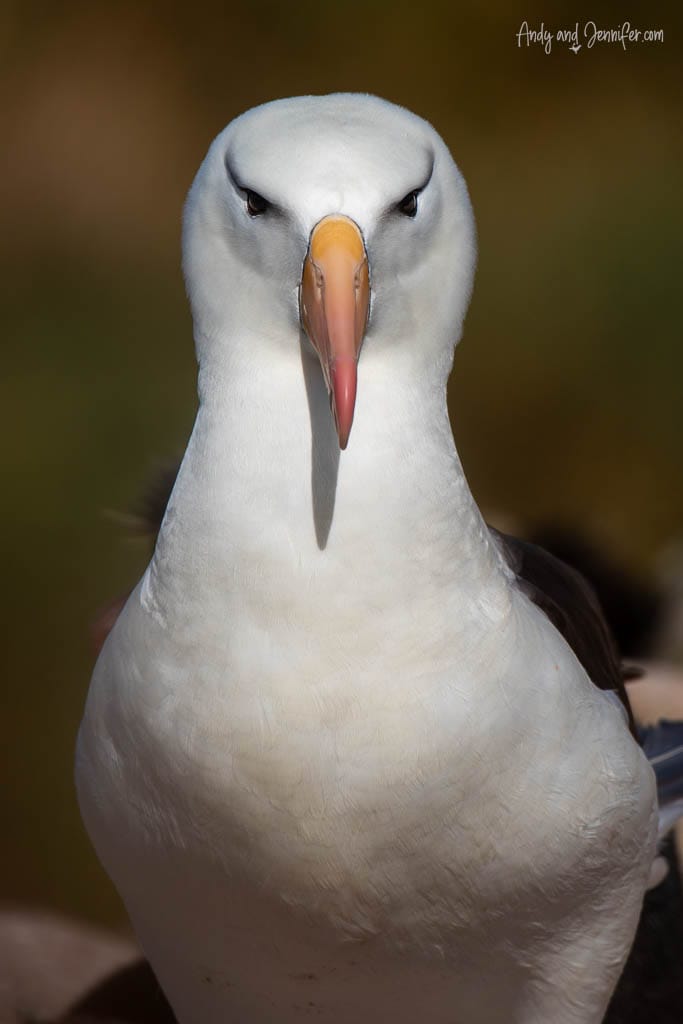



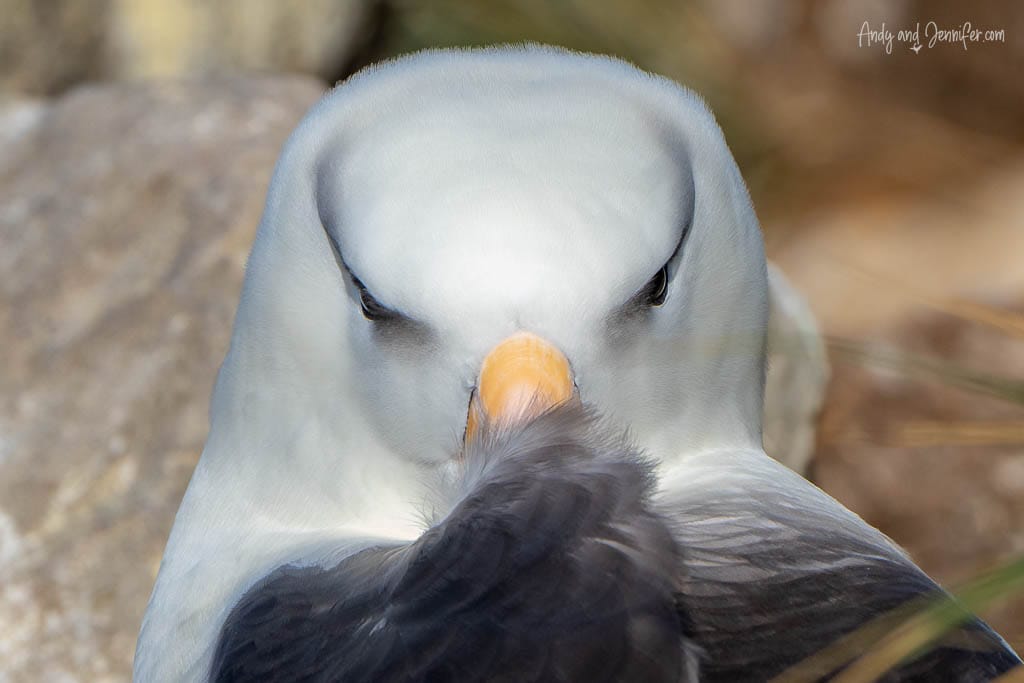

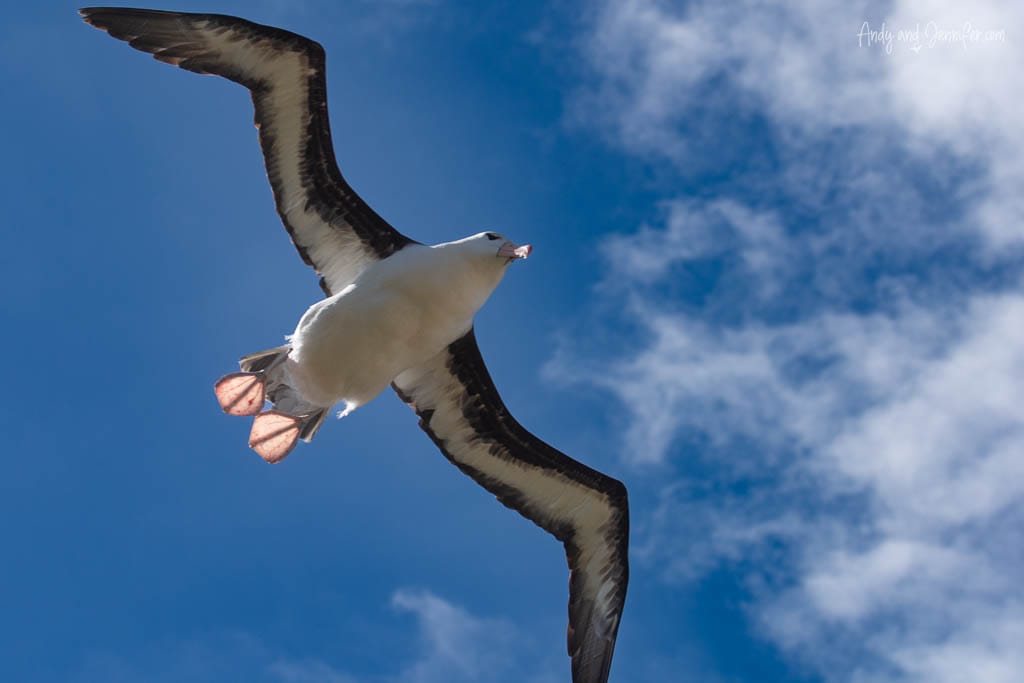
At first I was disappointed that the onshore wind meant lots of bird butt photos, but I came to love the way their feet splay out like airplane landing gear when they land into the wind.
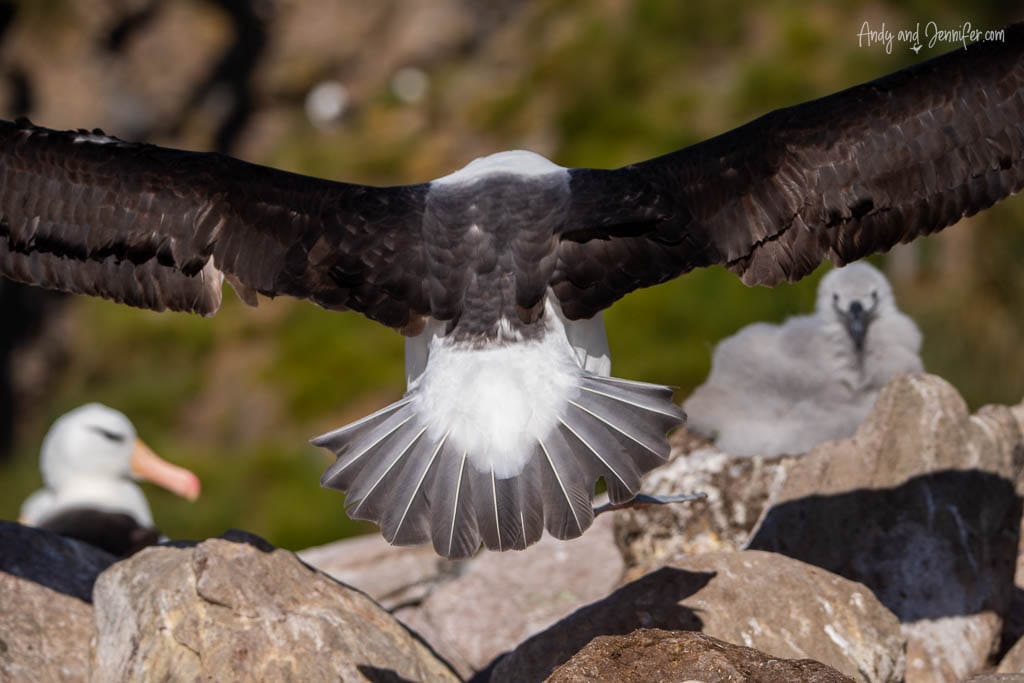
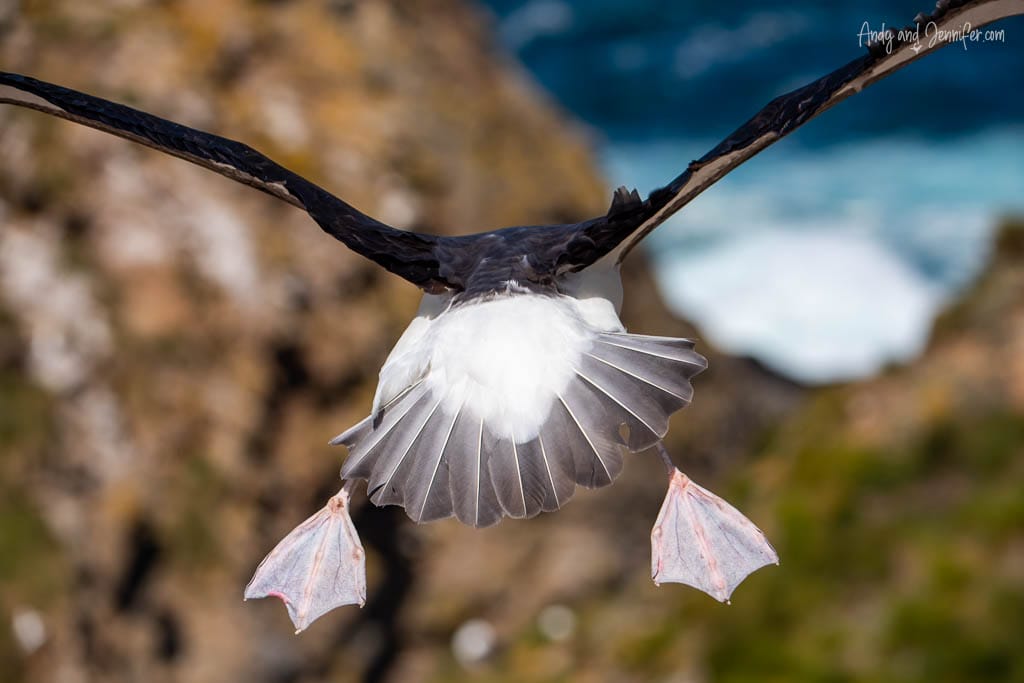


The scale doesn’t come through in the images, but these are big birds, with a wingspan ranging from about 2 to 2.5 meters (6.5 to 8.2 feet). They didn’t seem to mind our presence. One even snuck up right in the tussock in back of me, which wasn’t nearly as alarming as when the giant fur seals do.

The location felt surreal, with the albatrosses and rockhopper penguins nesting together peacefully in the tussock and rocks. Rockhopper penguins, with their piercing red eyes, are named for their unique way of hopping rather than waddling across the rocky cliffs of their rugged breeding grounds. The rockhopper chicks, with their fluffy, plain gray feathers, almost look like the cartoon or stuffed penguins in contrast to their sharp-eyed, spiky-haired parents.


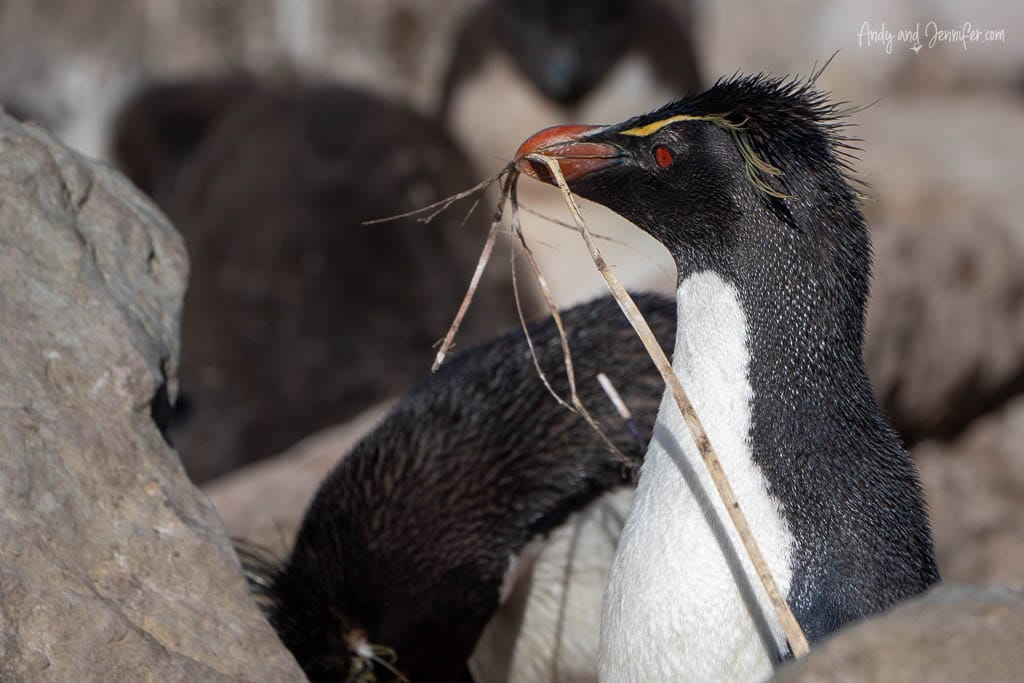
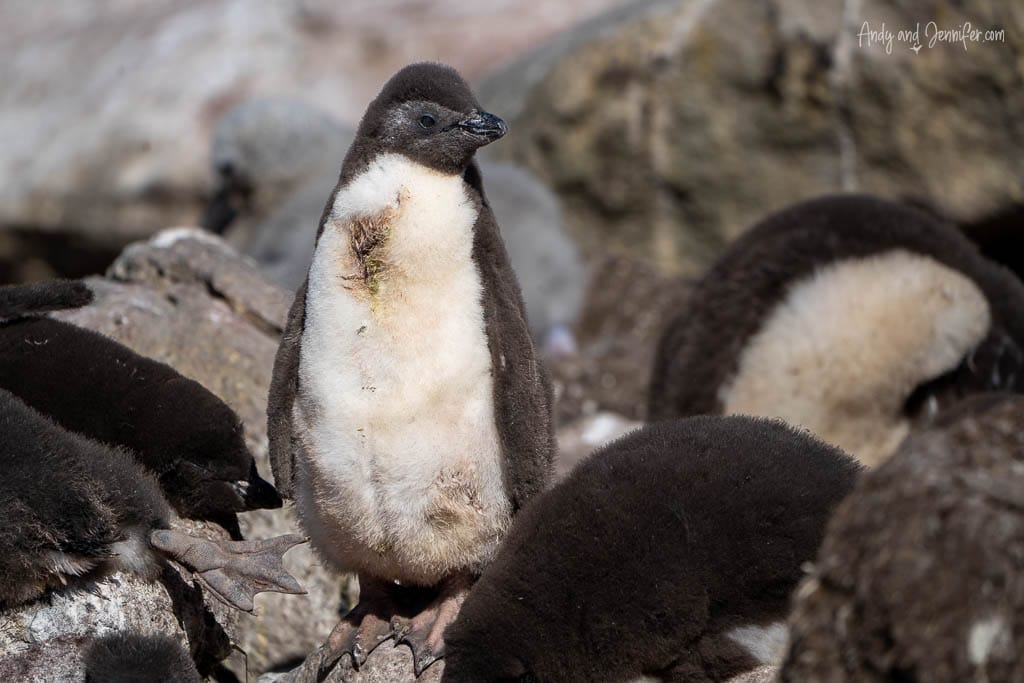
The walk back to the settlement revealed even more wildlife, including a male and female long-tailed meadowlark and oystercatchers.



The caretakers of West Point Island invited us into their cottage for morning tea, and it was nothing short of impressive. Their garden was filled with fragrant flowers, a stark contrast to the past three weeks where the only smell we’d known was penguin.


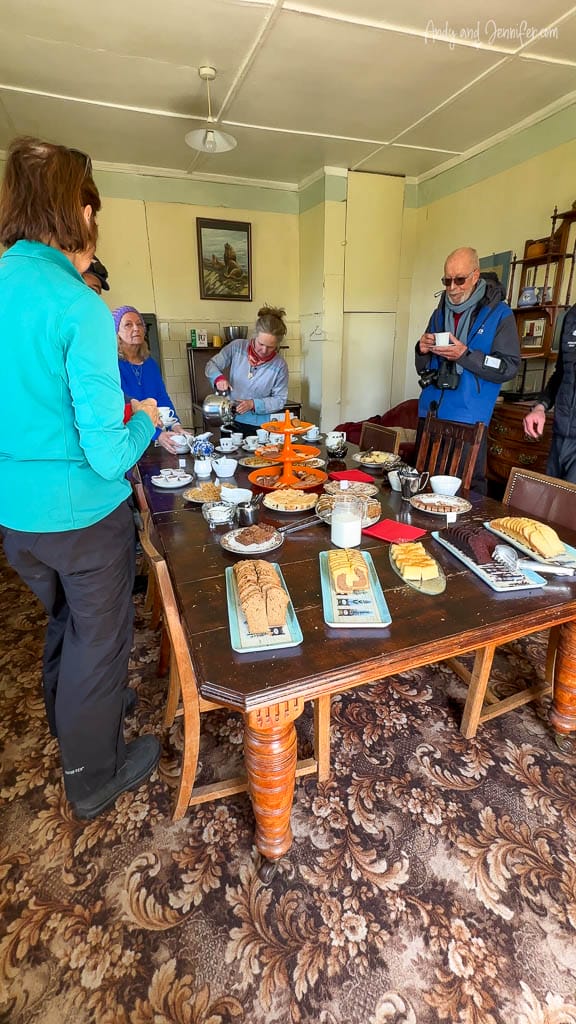

We returned to the ship with full bellies (and full memory cards).

We’re Andy and Jennifer—two former corporate executives who chose long ago to prioritise experiences over stuff while pursuing our passions for travel and photography. From the Arctic to Antarctica, and most places in between, we’ve captured the world through our lenses and love sharing those stories. Our careers gave us the means, but our purpose is inspiring others to explore and helping people create images they’re proud of.


